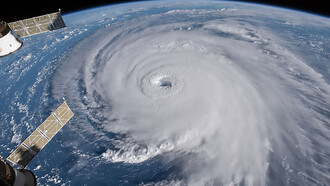Homosexuality, in addition to our species, is widespread in many other animal species, especially in the higher mammals, monkeys in particular. It is essentially part of many animal or human cultures. Sexual stimulation between individuals of the same sex has been seen in different circumstances in chimpanzees and macaques among adults, but also among adolescents as they reach sexual maturity. It is precisely on these last animals that we want to focus our attention, also to learn more about homosexuality in man and whether this behaviour really has cultural roots.
But what does culture have to do with homosexuality? Does it have something to do with it, because it can be a tradition. What does it mean, in this case, "tradition”? Homosexuality is like any other behaviour that is discovered, which then spreads in the community, as it is discovered and spreads any other cultural behaviour: for example, the use of sticks by chimpanzees to extract termites from a termite mound or the use of the medicinal herbs that these animals make to treat their tummy ache. In addition, homosexuality can become a useful strategy for many purposes, for example, the formation of new alliances that are not obtainable otherwise, in which homosexual behaviours are used that are different, of course, from those that serve for the reproduction.
By observing homosexual behaviour in monkeys, it was possible to get to know the strategies that are used in these circumstances. With monkeys it is much easier, much less in humans, to get to the knowledge of the social variables that drive these animals to behave in this way. But how do these behaviours manifest themselves in advance? The reciprocal cleaning of the coat between future homosexual partners and then move on to individual or reciprocal sexual organ stimulation, male and female, then mounts it with partial or total penetration, with ejaculation, partly external, but also internal of the males. In females, after stimulation with the hands or oral of the sexual organs, follow pelvic shucking in the most bizarre positions imaginable. Often in the female mount, one of them assumes the male role and the other the female role, just like in women. The rubbing of the sexual organs of the female who momentarily assumes the male role is much more amplified than the female taking on the opposite role. Both, however, get excited and this is highlighted by the emission of particular groans accompanied by facial expressions that are typical in these circumstances. Orgasm is often achieved among both males and females, with muscle spasms, but in females they are more evident than in males who instead ejaculate.
In monkeys, homosexuality is almost never linked to the reproductive cycle, that is, it hardly manifests itself when females are in heat. Heterosexual relationships are more common during this period. Basically, in monkeys, the analogy with homosexual activities in humans, are really amazing. In macaques and chimpanzees, especially in the pygmy chimpanzee (Pan paniscus), homosexuality is widespread at different age levels. Homosexual males can be adult, but also young. Homosexual females can also belong to different age groups. They are so when they are primiparous, multiparous, pregnant and even when they are breastfeeding puppies.
In these activities a very important aspect is the role assumed by partners in society. For example, homosexuality among females is more prevalent than among males and especially among low-ranking females. Males tend to be high-ranking individuals. It is very rare for an Alpha male to get sexual relationship with a low-ranking male or on the margins of society or perhaps in the process of being kicked out of the group, as is often the case in chimpanzees and even in macaques in excess in the group and therefore disturb a harem-like structure where these animals live.
Some teenagers do it for fun, others because they can see the possibility of progressing on the social ladder. However, homosexuality also means establishing strong relationship, emotionally affective bonds that do not depend on hormonal conditioning and therefore on the level of oestrogen and testosterone in the blood. In fact, homosexuality often manifests itself at times when these hormonal levels are quite low and therefore outside the reproductive period.
In monkeys, among males, homosexuality manifests itself with all the premises typical of heterosexual mating: erection, penetration, pelvic strokes and ejaculation. In females it is more stereotypical: launched the stimulus from one female is easier to predict the reaction of another female.
In homosexuality, however, there exists, almost always in monkeys, but also in humans, a relationship of dominance/submission between partners. In general, the mounter is slightly more dominant than those who are mounted, but the constraints can be, as previously said, also affective and emotional that the two partners aim to establish.
In order to be able to talk about homosexuality in man it is important to refer to the last two words of the previous sentence "they aim to achieve". And that's where the crux of the matter is. Homosexuality in human does not originate from a character disorder, nor does it stem from a psychological complex, for example, from the fear of the maternal figure and identification with the father (Oedipus complex) (All these psychoanalytic theories have always led us astray) and, most importantly, there is no gene of homosexuality as some people want us to believe.
Homosexuality is not aligned with anything or anyone. In humans it is above all an existential condition with strong social, environmental, especially family implications and, almost always, it is not accepted by the society. It is a social prejudice or stigma. It is now and always has been. An example for everyone. In Victorian England, in the mid-19th century, the well-known poet and writer Oscar Wilde was accused of sodomy, subjected to two legal proceedings, then imprisoned and sentenced to two years of forced labour that he served without bowing to the social conventions of his time. It was a love that was more intellectual than anything else, but nevertheless with a strong mutual seduction between the partners.
There is, however, the fact that homosexuality is widespread. On the contrary. It is an exception, otherwise a species, any species, would run the risk of becoming extinct. It is therefore not the rule, otherwise Darwin's evolutionary theories on sexual reproduction should be questioned.
Homosexuality can be used for purposes that are sometimes difficult to imagine, especially in humans. For example, one strategy could be to undertake it, as in heterosexual or bisexual relationships, with important homosexuals people, powerful and wealthy men (or women), to progress faster in career, to gain prestige, to succeed, that is to say to achieve goals that without this form of relationship would be impossible to achieve, as we see in the world of fashion and cinema, especially in Hollywood; the cases of the actors Rock Hudson and John Wayne teach, unthinkable to be divulged at that time. Today, however, in these environments, even if not always, homosexuality is flaunted without problems, it is no longer hidden without causing scandal or indignation, or almost, as it used to happen in the past.















